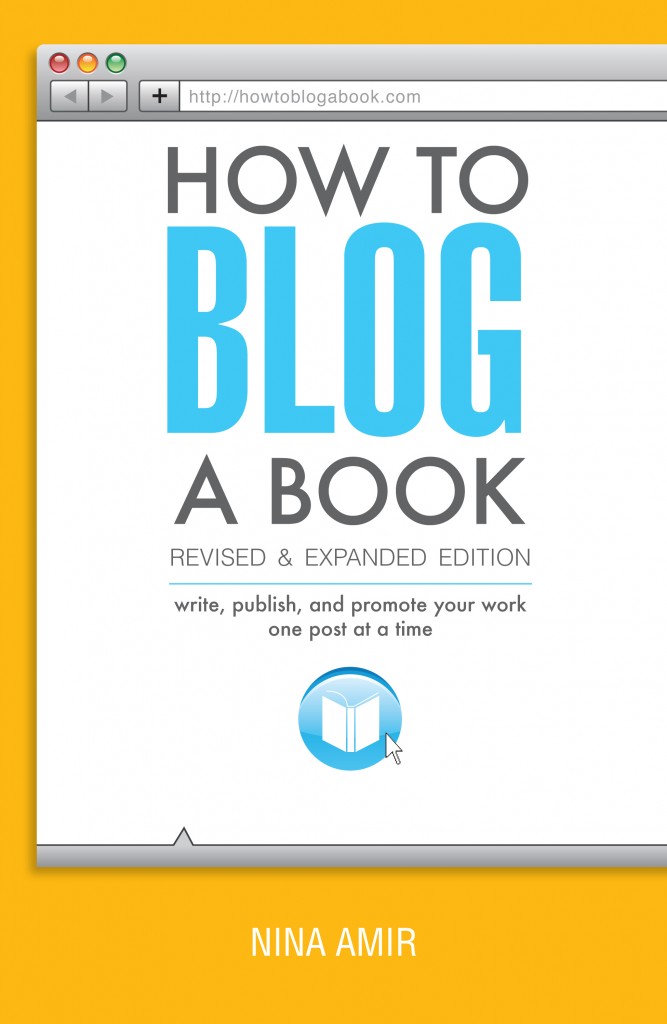
Last year I received a new kind of book contract from my publisher. This one asked me to revise the current–soon to be previous–edition of How to Blog a Book. Lots of successful nonfiction books need to have a “refresh” every few years.
The publisher had asked me to submit a list of changes I could make to update, revise, and expand the book, and I had done so. In response, I got a new contract–for the same book.
I thought the revision process would be pretty simple. In some ways it was. In others, it was complicated; it required handling a lot of old and new parts that need to be merged.
Not only that, I found revising a book not as exciting or interesting as writing it the first time around. After all, I was working with content I knew inside and out and a manuscript I’d read more times than cared to remember. The revision required rereading again (at least a few times) before submitting the manuscript, and then several times during the editing process.
On the other hand, it was fun and fulfilling to see a good book become better. There were things I knew it needed, and I was thrilled to have the chance to do so.
When I had finished the revision, I was pleased to discover I was prouder of the book than I when I completed the manuscript back in 2010. It now contained all the pieces I felt the first edition was missing.
How to Revise a Book
Since some of you might one day need to revise your blogged book, I thought I’d share with you the process I used.
Step 1: Determine what new or updated content would benefit the book.
I created a detailed list of the new content that should be added to the book the areas that needed updating or expanding. I then created a brief synopsis of each item on that list. I gave this to my publisher (but you can use it for yourself if you self-publish). I used this as my guide as I moved into making the revisions.
Step 2: Import my old manuscript into Scrivener.
I decided that the easiest way to keep track of all the pieces in this project (and there were many) was to use Scrivener. My publisher provided me with a Word file of the first edition. That became my starting place.
I imported the Word file into Scrivener. I immediately had all my chapters in folders!
Import other potentially usable content.
I then imported any other research, content, or blog posts I had written. This included a post on publishing blogged books to Amazon’s Kindle and Kindle Select program, one on legal issues, and a whole chapter on booking a blog.
I also imported a mind map of all the additional and revisions I intended to make. I had created this when I brainstormed the new content. It contained information about the people I needed to contact as well. I placed this into Scrivener’s research folder as a PDF.
Step 4: Start revising and adding content.
I began rereading every chapter and making changes as necessary. I made small line edits to strengthen sentences, updates to the content as necessary, and general revisions to improve the content.
Additionally, I edited the new chapter on booking a blog and added content to several other chapters that I felt would benefit from more depth, breadth, or resources.
Plus, I contacted authors who had blogged books to request their success stories. Once these came in, I uploaded them to Scrivener and edited them.
Step 5: Obtained permissions and approval.
Many of the sections I added to the second edition needed to be sent back for approval to experts or contributors. During this process, I also asked them to sign permission forms, which allowed me to use their work in the book. I stored all the permissions in Scrivener.
Step 6: Final editing and compiling.
With all the pieces in place, I read through the manuscript one last time. I then “compiled” from Scrivener into a Word document. I checked the Word document for formatting errors, and then I sent it off to my editor at Writer’s Digest Books.
What’s New in How to Blog a Book Revised and Expanded Edition?
Of course, the manuscript came back to me not once, but four times. That’s typical when you work with a publisher. The author rereads and revises after a round of developmental editing and a round of line editing. Then you read the whole manuscript again once the book has been designed…and one more time right before it goes to press.
If you already have a copy of How to Blog a Book, you might be wondering if it’s worth your while to purchase the new edition. I mentioned some of what I added, but let me give you a rundown of all the new content you’ll find in this new edition.
 An entire chapter detailing step by step how to book a blog (vs. blog a book). Many bloggers purchased the first edition of How to Blog a Book thinking it would tell them how to repurpose their old blog posts into a book. It touched on this topic but did not go into any detail. Why? Becuase the book was about blogging books–intentionally writing books on blogs. However, I realized early on that the book needed more information on booking a blog, and now it has it!
An entire chapter detailing step by step how to book a blog (vs. blog a book). Many bloggers purchased the first edition of How to Blog a Book thinking it would tell them how to repurpose their old blog posts into a book. It touched on this topic but did not go into any detail. Why? Becuase the book was about blogging books–intentionally writing books on blogs. However, I realized early on that the book needed more information on booking a blog, and now it has it!- Updated comprehensive and correct legal information on how to copyright your blog. I had no idea about the complexities of copyrighting a blog when I wrote the first edition. Over the last few years, I heard some things that made me do some research and seek better counsel on this topic. So many people ask me about it! And now the answer is in this book for you to read.
- Four blog-to-book success stories. Each author’s measure of success and reason for blogging are different from the next, and their journey’s from blog to book differ as well. Learn from those who went before you. Use them as models. (Of course, there are still super booked-blog success stories in the book as well.)
- Updated information on plugins and other techy information about setting up your blog. Things change quickly in the world of technology. This section contains advice from several experts on the most important plugins you need as well as information related to Google’s updates.
- Updated information and new technologies for going blog to book. I tried a variety of technologies I previously mentioned and tested a few new ones as well. (I used them to produce e-books.) I explored how to get your content off your blog and more.
- Accurate information on what you can and can’t do on Amazon with a blogged book. I interviewed someone at Amazon about both the Kindle and Kindle select program to get the low down. Make your decision about what Amazon program you will use before you start blogging your book.
- More information on how to become a blogpreneur. I don’t just want you to become an author. I want you to make money as an author and as a blogger. So I beefed up the section on how to monetize both your blog and your book.
And there’s more! But those are the biggest changes and additions to the revised and expanded second edition of How to Blog a Book.
As I said, The revision process was…well…different. It’s not like blogging or writing a book from scratch. But it was fulfilling. I’m enormously proud of How to Blog a Book Revised and Expanded Edition. I think it’s worth buying even if you have the first edition. And if you haven’t yet purchased a copy of How to Blog a Book, you want to do so now!

Nina, I’m so glad I found your blog and book. I’m in the midst of revising my book Lead Generation for the Complex Sale (McGraw-Hill) and just finished the learn scrivener fast course. Your blog is super helpful. Thank you and keep up the good work!!
Thanks so much, Brian! Good luck with your revision. I recently revised How to Blog a Book. If you want to promote your book with a guest post here, let me know! Submit a post topic that relates to selling books or products and services that bloggers/authors might create and sell from their sites.
I have been working on this revision for years. I need help. If you can help me I would appreciate it.
If you book is straight nonfiction, not memoir, contact me at nina@ninamir.com, Fishert. We can discuss your project.
Hi Nina,
and thanks for this post, it’s very helpful. I’m a self-publishing writer whose non-fiction ‘Safe Hands’ has been out about a year. As I started recording it onto audio, I was like ‘this book needs revision!’ It lacks voice and smacks of low-confidence in the book itself (!) that the process of self-publishing ironically remedied. Anyway, that’s a topic for another time, but for now, back to the Word doc I go!
All the best with your writing Nina, keep up the great work.
Nicola McKenna w/a Nikki Weston